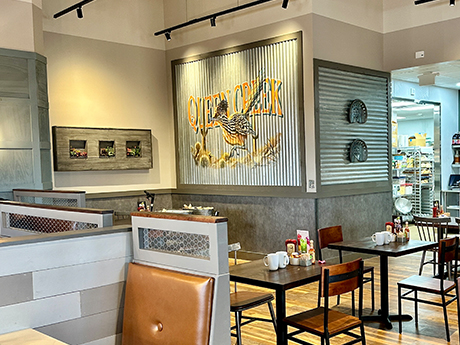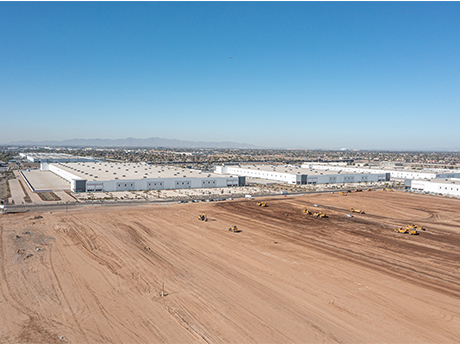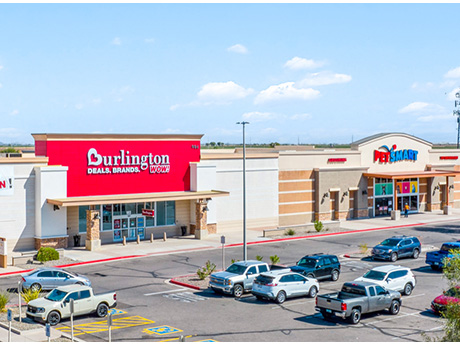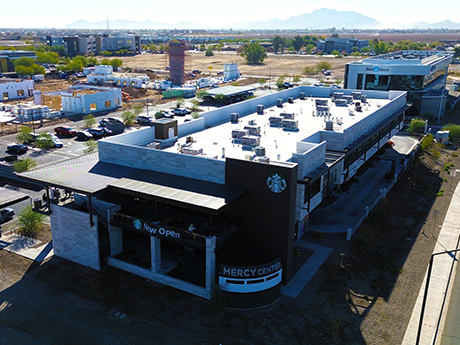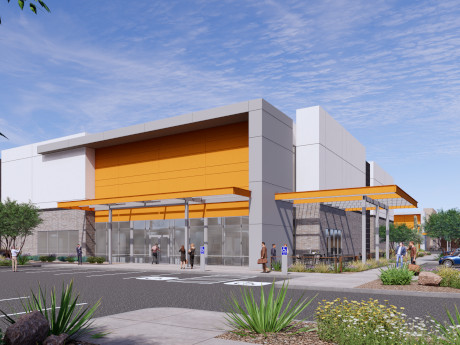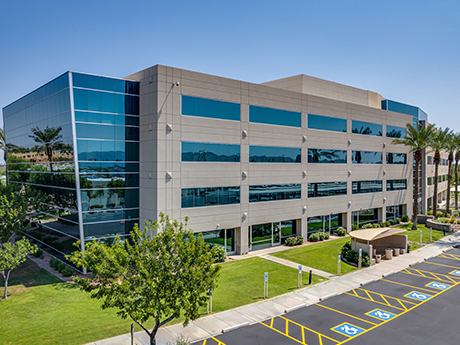By Nellie Day Metro Phoenix’s population grew to include more than 5 million people in 2023, per the Census, making it the second fastest-growing large U.S. city that year. This increase in residents and employment opportunities naturally brought new, emerging and different retailers to the area, who quickly occupied both existing centers and new developments. Phoenix-headquartered Vestar’s activity paints a picture of how this retail market has grown with its population. In the last quarter of 2024 alone, Vestar broke ground on Verrado Marketplace, a 500,000-square-foot shopping center in Buckeye; ushered in a new wave of tenant openings at Las Tiendas Village in Chandler and Queen Creek Marketplace in Queen Creek; and brought back a seasonal pop-up inside a 50-foot spherical dome at the District at Desert Ridge Marketplace in Phoenix. Balancing Tenant Mix, Community Relevance The key to capitalizing on Metro Phoenix’s growth, the firm says, is focusing on tenant diversification and market positioning. Vestar actively seeks out curated tenant mixes that not only attract foot traffic but align with the demographic and economic profiles of each community. Las Tiendas Village, for example, recently welcomed Marshalls, beauty supply store Happy Beauty, luxury lash spa Revelashons and child-focused hair salon …
Market Reports
— Phillip Hernandez, Research Director, Colliers — The Phoenix industrial market showed resilience throughout 2024. Arizona ranked fifth in net migration as of October, with 62,533 new residents — 52.8 percent of whom relocated from California. This influx of residents has positively impacted the labor market, growing Phoenix’s workforce by 42,900 employees by November, a 1.7 percent increase from the previous year. Investor interest in Phoenix’s industrial sector also remains strong. Fourth-quarter sales volume reached $1.9 billion, a 74 percent increase compared to the previous quarter and a 91.8 percent year-over-year increase. This brought last year’s total sales volume to $4.3 billion, with average prices per square foot rising by 2 percent (to $204.20) compared to fourth-quarter 2023. Vacancy Trends and Absorption Despite strong investor activity, the Phoenix market is experiencing rising vacancy rates. New deliveries in the fourth quarter added 7.8 million square feet to the market, bringing total deliveries for 2024 to 34.8 million square feet. However, the vacancy rate increased to 10.6 percent, marking a year-over-year 390 basis points rise. This increase is largely attributed to the completion of vacant product. Net absorption reached 3.8 million square feet in the fourth quarter, contributing to a year-to-date total of …
— Dave Carder, Senior Vice President, Kidder Mathews — The state of Phoenix’s office market is not easily summed up with a catchy headline or a few brief bullet points. Along with most large metropolitan areas across the country, Phoenix has struggled with lower demand, rising vacancies and a shift toward hybrid workweeks. However, several emerging trends are creating positive shifts in the market that should be noted as we look to 2025 and beyond. The average vacancy rate of the Phoenix office market over the past decade was 18.5 percent. That includes a low of 13.9 percent in 2019 and a high of 24.8 percent in 2024. Gross leasing absorption averaged nearly 7 million square feet annually, with a high of nearly 7.9 million square feet in 2019 and a low of 5.5 million square feet last year. Net leasing absorption showed a similar pattern, peaking at 3.1 million square feet in 2019 and declining to negative 2.2 million square feet in 2024. These trends point to 2019 being the market’s best-performing pre-pandemic year across all three metrics. Despite 2024’s gross leasing absorption (5.5 million square feet) being close to the 10-year average, the significant rise in vacancy and …
— By John K. Jackson of Colliers Phoenix — Casa Grande, Ariz., stands at a pivotal juncture that could see it transition into a Tier II retail market this year. Phoenix’s Greater Metropolitan Area has been characterized by historically low retail vacancy rates, prompting retailers and developers to explore opportunities outside the urban core. Casa Grande’s strategic location less than 50 miles south of Phoenix Sky Harbor International Airport makes it well-positioned to capitalize on this migration. The Dynamics of Casa Grande’s Growth Casa Grande has experienced notable growth in recent years. It was the seventh fastest-growing U.S. city in 2021, experiencing a remarkable 24 percent population increase since 2016. This growth, paired with job creation across sectors, is attracting major employers, including Lucid, LG Energy Solution and Kohler. These three firms promise to collectively bring more than 6,400 jobs to the area. Such economic development lays a solid foundation for retail expansion. After all, a growing workforce typically leads to increased consumer demand. The significant investments being made in the area further bolster Casa Grande’s potential as a retail hub. Lucid has recently expanded its manufacturing complex to 4 million square feet, with plans for additional land acquisition to support …
— Scott Hintze and Marti Weinstein of Diversified Partners Commercial Real Estate — Phoenix’s retail development market is seeing a surge in optimism as the city benefits from a growing economy and a shift in political leadership. With the new administration coming into power, the outlook for the Phoenix retail market has become increasingly positive, promising a wave of new projects and investment opportunities in the coming years. The city’s rapid population growth, expanding infrastructure and bustling job market have positioned Phoenix as one of the most attractive cities in the U.S. for retail development. The new administration has brought a renewed focus on urban development, job creation and business-friendly policies, which is expected to help stimulate both demand for retail spaces and the construction of new commercial properties. Government support, including incentives for developers and tax breaks for businesses, is anticipated to foster a thriving retail sector that will benefit both local residents and national retailers looking to expand into the area. Several projects we have been working on have seen unprecedented demand from tenants. We recently completed a 25,000-square-foot building across from Gilbert Mercy Hospital that includes a two-story Starbucks, the first in the market. In addition to …
— By Brett Polachek of Newmark — Phoenix’s multifamily market experienced dynamic shifts in 2024, driven by strong population growth, economic expansion and single-family cost of ownership. Phoenix remains a top relocation destination, with a population growth rate of 1.8 percent (+85,000 residents), nearly double the national average of 0.98 percent. This influx is supported by the addition of more than 52,000 jobs from October 2023 to October 2024. Phoenix also has the fifth healthiest rent-to-income ratio among 30 major U.S. markets that we sampled. Demand for multifamily housing reached record levels, with 14,528 units absorbed annually, marking the strongest performance since 1994. The supply experienced an annual increase of 6.4 percent as 19,835 units delivered last year. The far West Valley submarkets of Avondale, Goodyear and West Glendale led supply growth, adding 6,100 units to their inventory. The market showed resilience despite this historic supply wave. Occupancy rose 1 percent year over year to 93.7 percent, while Class B units clocked in a 94 percent occupancy rate. This was followed by Class A at 93.8 percent and Class C at 93.2 percent. These figures remain slightly below pre-pandemic levels, but they reflect a strong recovery trajectory. Asking rents in …
— By Patrick Dempsey, senior managing director of JLL Capital Markets — The Phoenix retail capital markets environment is showing signs of resilience in the face of current economic conditions. While the market has experienced a period of lower transaction volume, recent drops in interest rates have begun to bridge the gap between buyer and seller expectations, potentially paving the way for increased activity. Notably, Phoenix stands out with impressive positive rent growth, recording the highest rate at 7.4 percent among major metros and Sun Belt markets. Phoenix’s robust employment market, especially in the semiconductor sector, continues to be a major advantage. The city boasts a strong base of major employers, contributing to its ongoing economic vitality. Investor demand remains concentrated on grocery-anchored properties and premium retail locations, highlighting the enduring value of strategically positioned assets. This trend is especially pronounced in high-growth submarkets. For example, the Southeast Valley is experiencing significant suburban and residential growth, driving the development of new grocery centers to serve the expanding population. Similarly, Northwest Phoenix with areas like Peoria and Glendale are seeing strategic investments from grocers anticipating future population growth. Looking ahead, there’s increasing optimism for a stabilization of retail capital markets transactions …
— By Ryan Sarbinoff, first vice president and regional manager, Marcus & Millichap — Phoenix ranks third among the major markets in terms of both total net in-migration and job creation since the end of 2019. The region has also posted one of the largest jumps in median household income. Combined, these factors underpin heightened demand for housing and support elevated multifamily development. While total deliveries will rise for the fourth consecutive year in 2024 to a record high of 22,000 rentals, apartment absorption has notably kept pace through mid-year. As such, metro-wide vacancy is on track to dip to 7 percent by December. This would mark both a 30-basis-point decline from the 2023 peak, as well as an 18-month low. The improving alignment of supply and demand will encourage a return to rent growth, albeit slight. The average effective rent will end 2024 at $1,585 per month, up from the year before but down 5.3 percent from the peak set in 2021. Apartment completions over the past year (ending in June) were most prevalent in the Avondale-Goodyear-West Glendale submarket, where a collective 5,200 units opened. This represented a 23.8 percent boost to existing stock. Yet, the substantial wave of openings …
Todd Ostransky, vice president of development at Indicap, knew Metro Phoenix was a market the firm wanted to enter for industrial development. Though the area is a hotbed of industrial activity, Indicap’s attention immediately set on Mesa, less than 20 miles east of Phoenix, for its inaugural project. “We identified the East Valley as an area of growth, along with the need for space for mid-bay industrial spec product,” he says. Indicap and joint venture partner AECOM-Canyon Partners chose a 65-acre space within the mixed-use, master-planned community of Eastmark. The JV purchased the site for $48 million in April 2022 during a period of “aggressive expansion,” which saw Indicap kick off 10 developments involving more than 13 million square feet of Class A industrial space across key Arizona corridors. The inaugural Phoenix-area project was Eastmark Center of Industry, which completed Phase I construction in April. This phase brought 978,837 rentable square feet of Class A industrial space to Mesa’s Gateway Airport submarket. The space spans five mid-bay and cross-dock buildings. It features concrete slab on grade, tilt-up exterior walls, and a hybrid wood roof system, ensuring durability and flexibility. Power was also a major amenity for a project of this …
— By Kyle Seeger, Vice President, JLL — Like office markets across the U.S., Phoenix continues to navigate its post-pandemic “normal.” But with red-hot population growth, a comparatively low cost of doing business, a dynamic office inventory and a stellar quality of life, it also remains a prime contender for new office locations, relocations and expansions. Metro Phoenix’s overall office vacancy rate had ticked up slightly to 25.6 percent at the close of 2023. Average annual rent growth had decelerated moderately to 0.8 percent year over year, but remained positive. The overall direct asking rent had stabilized at just over $29 per square foot. Although negative absorption remained markedly high at more than 3.5 million square feet through 2023, there was less quarterly loss in the fourth quarter compared to the third quarter. Amid all of this, Phoenix’s cost and demographic advantages — along with its ample inventory — pushed leasing momentum forward. In some cases, it even created positive net absorption, such as in prime office corridors and in newer, highly amenitized Class A projects. The Grove, a 180,000-square-foot, Class AA office building in the Camelback Corridor, is a prime example of this. Within 16 months of its mid-2021 …
Newer Posts


